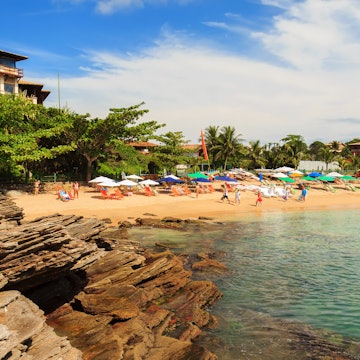

Getty Images/iStockphoto
Overview
If you thought Rio was just a city, think again! Right next door, the equally enticing state of Rio de Janeiro is home to some of Brazil’s greatest treasures, all within an easy one- to four-hour journey from the Cidade Maravilhosa (Marvelous City).
Plan your trip with Guide, an AI travel planner!
Create a personalized trip itinerary in seconds using artificial intelligence.
Must-see attractions
Get a book. Get inspired. Get exploring.
in partnership with getyourguide
















